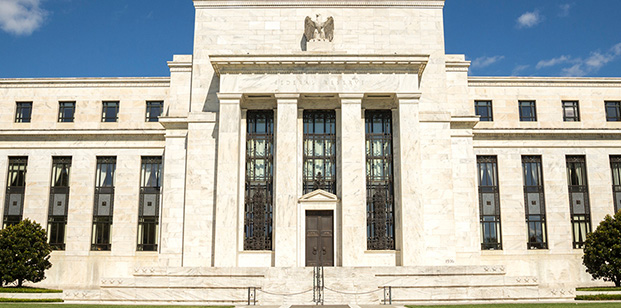As expected, the Federal Reserve (Fed) rounded off 2018 with its fourth interest-rate increase of the year, and its ninth since 2015. Fed policymakers raised the key federal funds rate by 25 basis points to a range of 2.25% to 2.5% at their December meeting.
- Policymakers expect to implement two increases next year, instead of three
- The Fed trimmed its forecasts for GDP growth in 2019
- President Trump continued to criticise the Fed’s strategy
As expected, the Federal Reserve (Fed) rounded off 2018 with its fourth interest-rate increase of the year, and its ninth since 2015. Fed policymakers raised the key federal funds rate by 25 basis points to a range of 2.25% to 2.5% at their December meeting.
“A mood of angst about growth going forward”
The move was both widely anticipated and unanimous, despite vocal and public criticism from President Donald Trump, who has described the Fed’s strategy as “way off-base”. Ahead of the Fed’s decision, President Trump urged policymakers to “feel the market, don’t just go by meaningless numbers”. Notwithstanding Presidential pressure, Fed Chair Jerome Powell stated afterwards: “Political considerations … played no part whatsoever in our discussion”.
The Fed downgraded its forecasts for economic growth in the US in 2019 from 2.5% to 2.3%, but maintained its projections for 2020 and 2021 at 2% and 1.8% respectively. Projections for the rate of unemployment remained at 3.5% in 2019, after which it is expected to edge slightly higher. Overall, Fed officials now expect only two interest-rate increases during 2019, rather than three.
Although the US economy remains relatively robust, broader global growth appears to be losing pace against a backdrop of recent stock-market turbulence, and Chair Powell highlighted “a mood of concern or … a mood of angst about growth going forward”. Looking ahead, the Fed intends to “continue to monitor global economic and financial developments and assess their implications for the economic outlook”.















